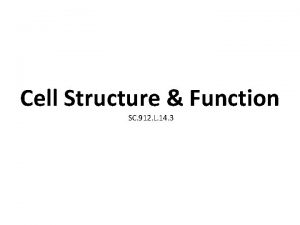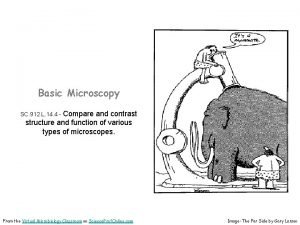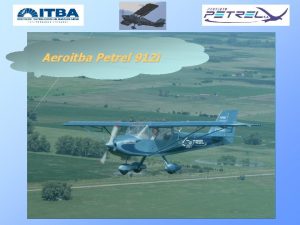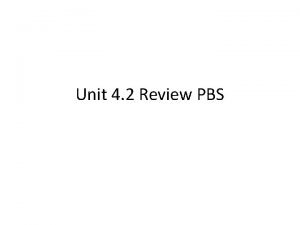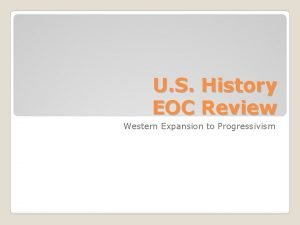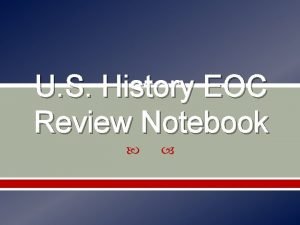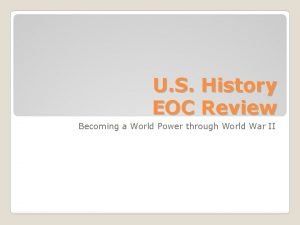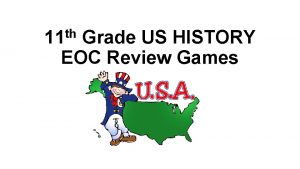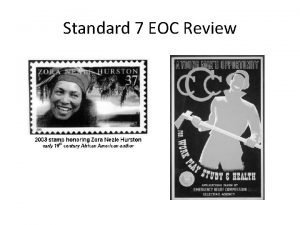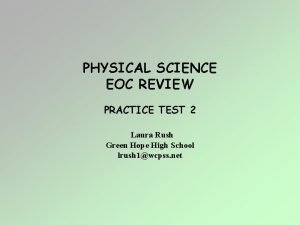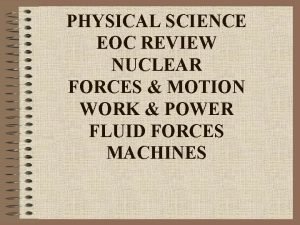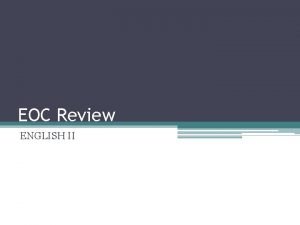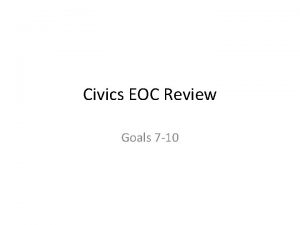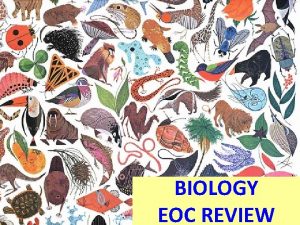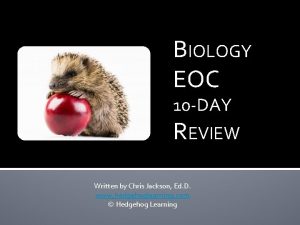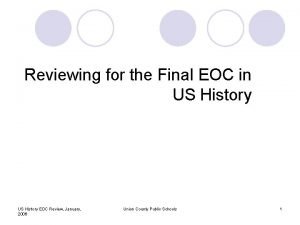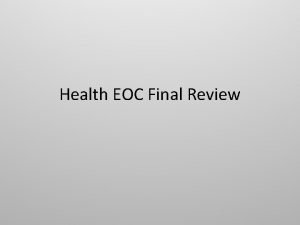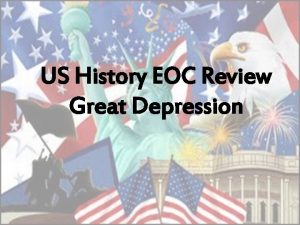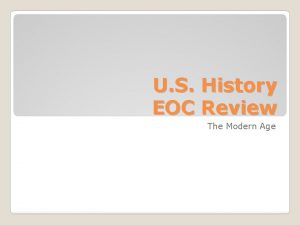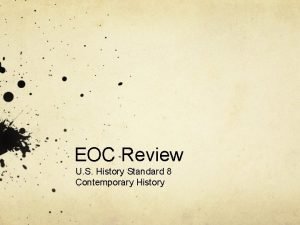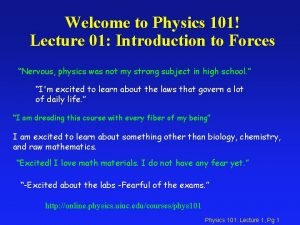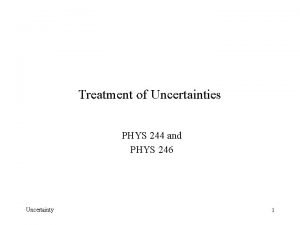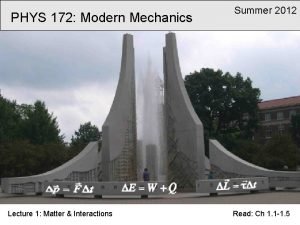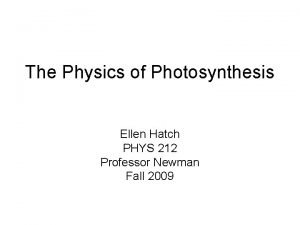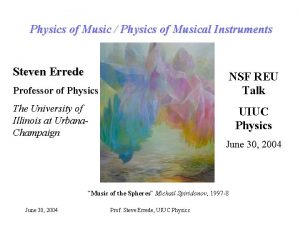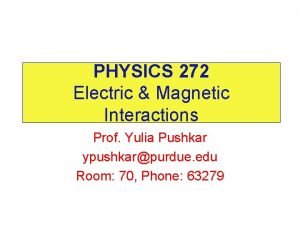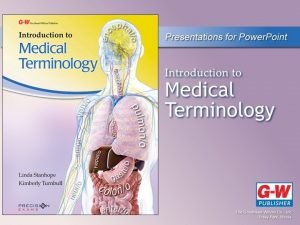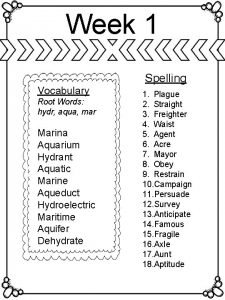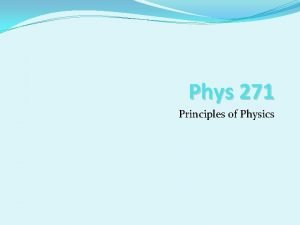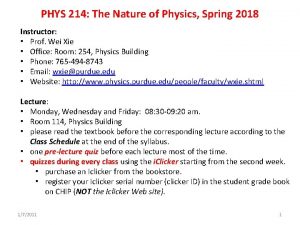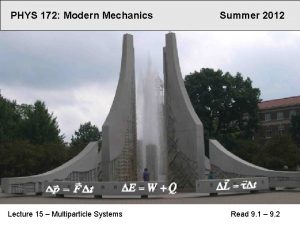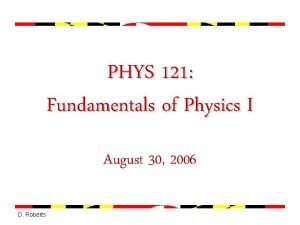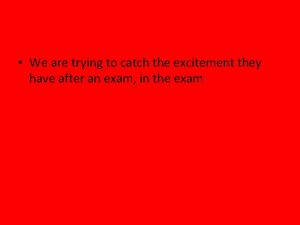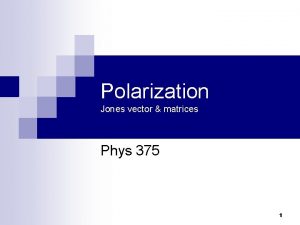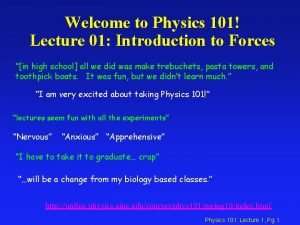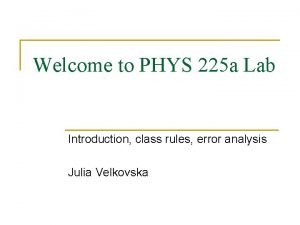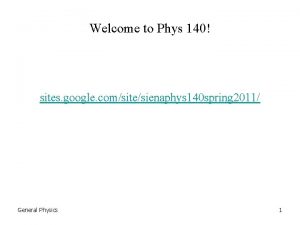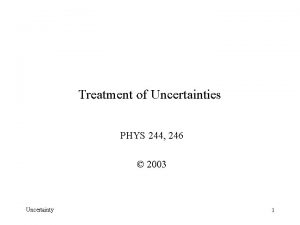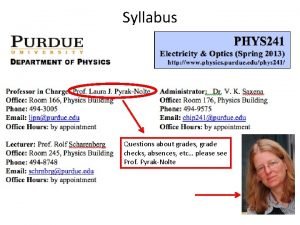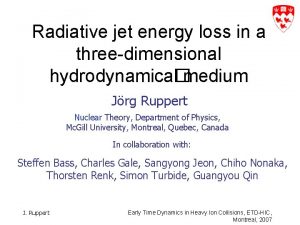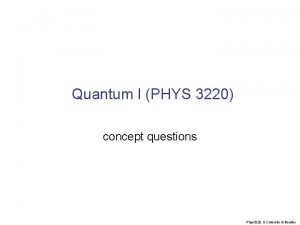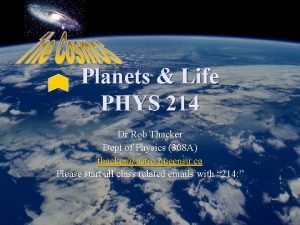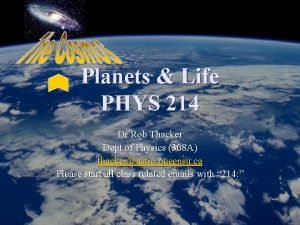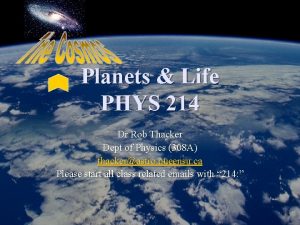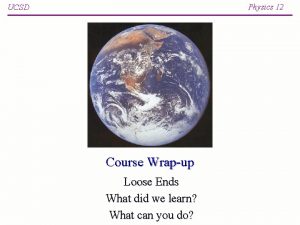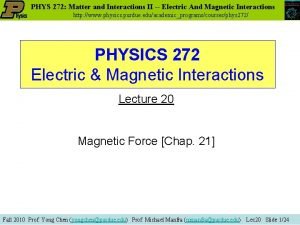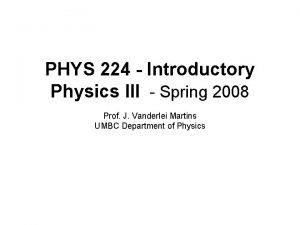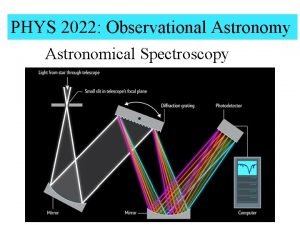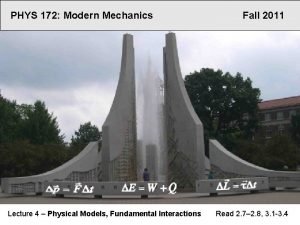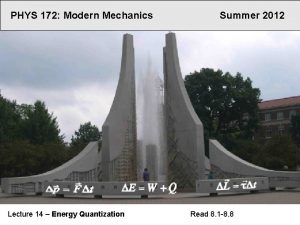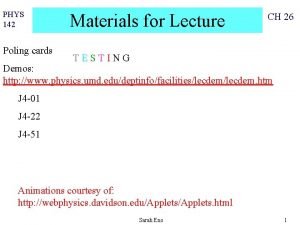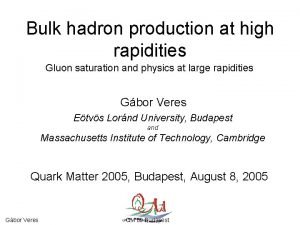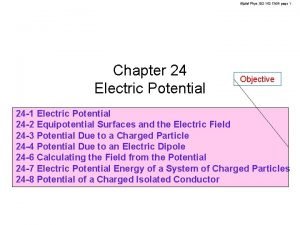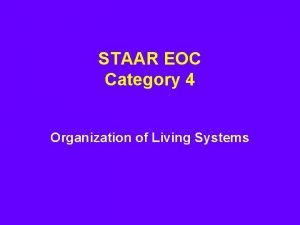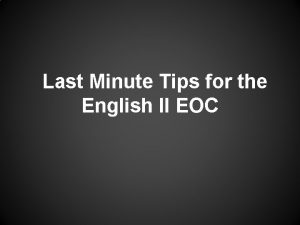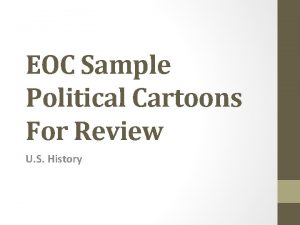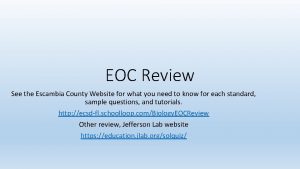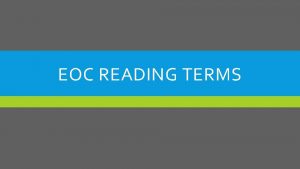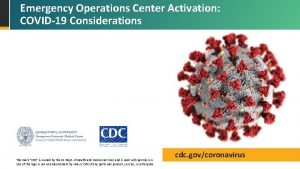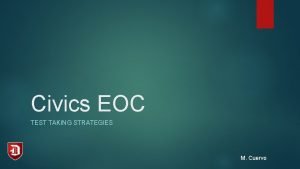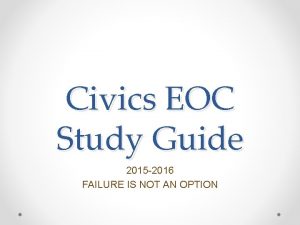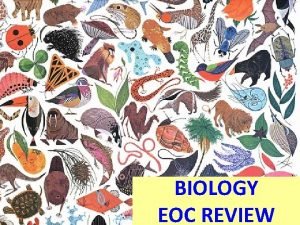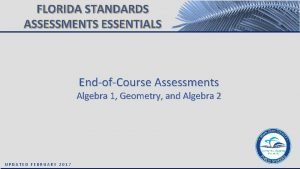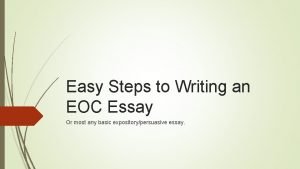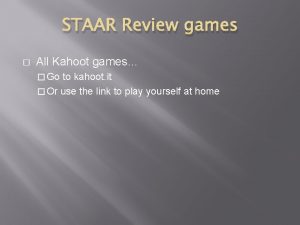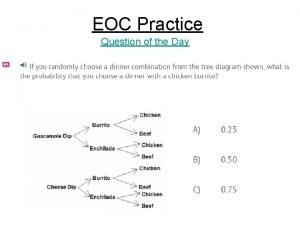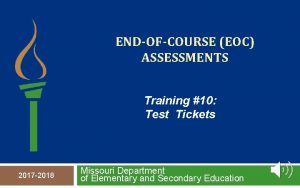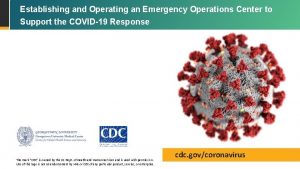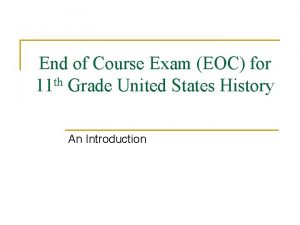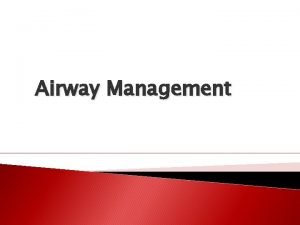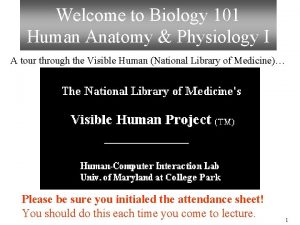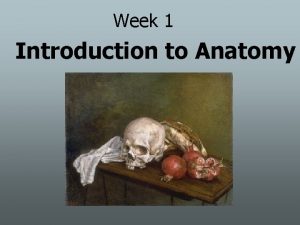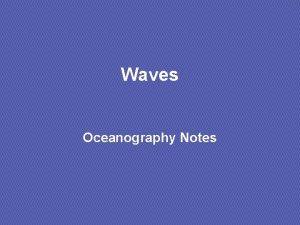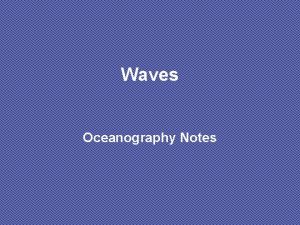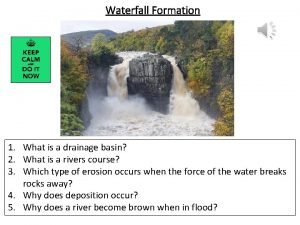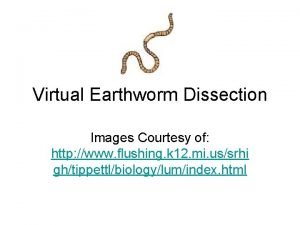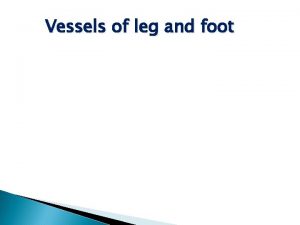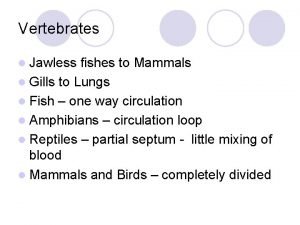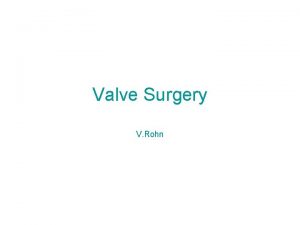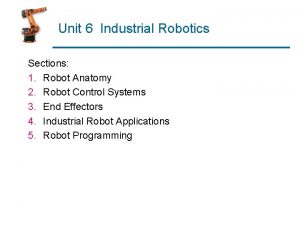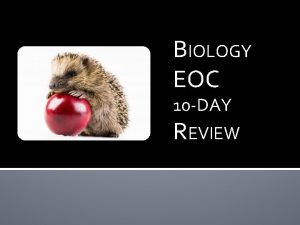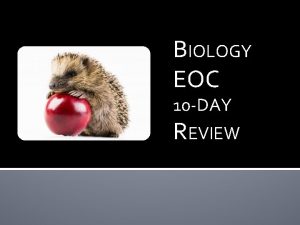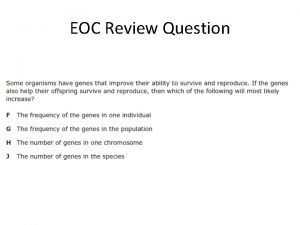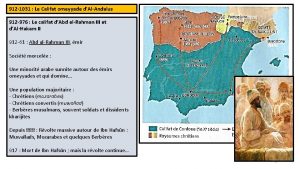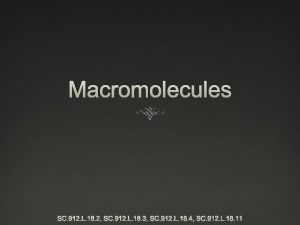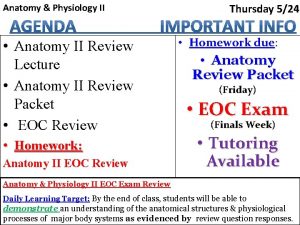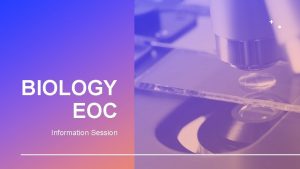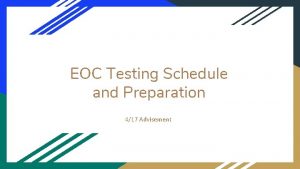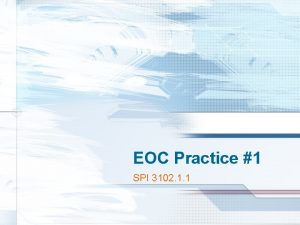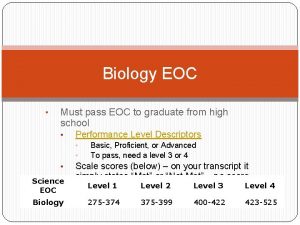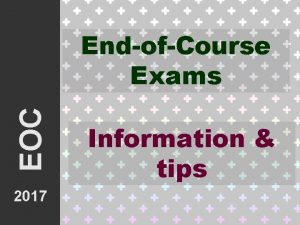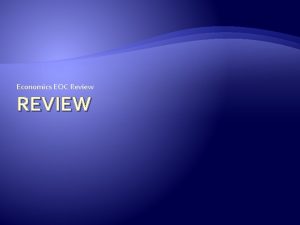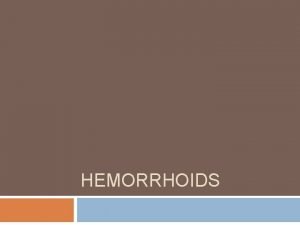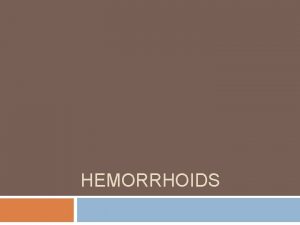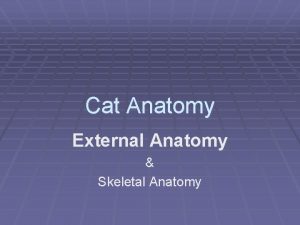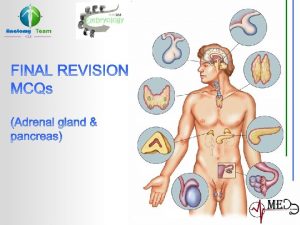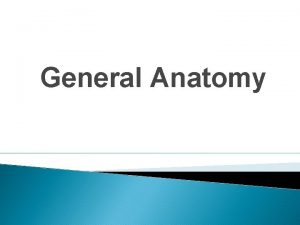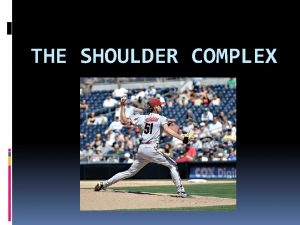Anatomy Phys EOC Review SC 912 L 14












































































































- Slides: 108

Anatomy & Phys EOC Review!

SC. 912. L. 14. 12 Describe the anatomy and histology of bone tissue. 2 questions (1 low, 1 med complexity) Students will know the parts of the bone. May include: anatomical long bone structures Microscopic bone tissue Cartilage Joints Bone marrow (red & yellow) Bone repair Bone remodeling It will NOT include bone diseases.

Long Bone structure

Microscopic Bone Structure

Joints & cartilage

Red vs Yellow marrow Location Function Red Yellow * flat bones (pelvis, sternum, ribs, skull, shaft (diaphysis) vertebra, scapula) of long bones * in spongy ends of (femur, humerus) long bones produce blood cells store fat

Bone Repair

Bone Remodeling OSTEOCLASTS = Kill bone (resorption) OSTEOBLASTS = Build bone (reforming) Bone must be broken down to release calcium and phosphorus. Balance of resorption & reforming results in healthy bone. Overactive resorption by osteoclasts results in osteoporosis. We have a brand new skeleton every 10 years!

SC. 912. L. 14 Identify the major bones of the axial and appendicular skeleton. 4 Questions (2 easy, 2 medium, 2 high-level) Students will know all 206 bones of the adult body. It will NOT include a diagram of an adult skeleton with specific bony landmarks (example lateral epicondyle of the right femur).

Axial vs Appendicular skeleton

Identifying major bones www. anatomyarcade. com

SC. 912. L. 14. 20 Identify the major muscles of the human on a model or diagram. 6 Questions (2 easy, 2 medium, 2 high-level) Students will know major muscle groupings It will NOT include origin, insertion, or specific action.

Identifying major muscles www. anatomyarcade. com

Face muscles


SC. 912. L. 14. 44 Describe the physiology of the respiratory system including the mechanisms of ventilation, gas exchange, gas transport and the mechanisms that control the rate of ventilation. 4 questions (2 easy, 2 medium) Students will know mechanisms for ventilation including gas exchange. It may include information on asthma and bronchitis.

Respiratory System diagram

Muscles involved in breathing

Diaphragm during breathing

Boyle’s Law In a closed system, Volume and Pressure are inversely proportional. When V increases, P decreases. When V decreases, P increases. https: //www. youtube. com/watch? v=e. R 49 g 3 ub. TBg https: //www. youtube. com/watch? v=N 5 xft 2 f. Iq. QU https: //www. youtube. com/watch? v=27 yq. J 9 v. J 5 k. Q

Mechanism of Breathing (Negative Pressure breathing) Inhale Exhale Diaphragm ____ Diaphragm_______intercostal muscles contract ______intercostal & ab muscles contract Volume _______ Pressure ____ Pressure____ Air rushes ______ Air rushes _____

Mechanism of Breathing (Negative Pressure breathing) Inhale J Exhale L Diaphragm contracts Diaphragm relaxes External intercostal muscles contract Internal intercostal & ab muscles contract Volume of thorax increases decreases Pressure increases Air rushes IN Air rushes OUT

https: //www. youtube. com/watch? v=Mf 8 x. Tqfspp 4

Lung model

Gas Exchange Occurs in 2 places: between capillaries & alveoli between capillaries & cells Occurs by simple diffusion Diffusion = moving from area of high concentration to area of low conc.

Gas Transport

How is O 2 & CO 2 carried in blood?

Control of ventilation rate (ventilation = breathing) Normal rate = ____? _____ breaths per min 12 -20 breaths per min Controlled by medulla oblongata of brain stem Inhaling Sends out nerve impulses to diaphragm & external intercostals, causing them to contract Exhaling Stops sending nerve impulses to muscles, causing them to relax

Asthma

Bronchitis

Triggers of asthma & bronchitis

SC. 912. L. 14. 32 Describe the anatomy & phys of the endocrine system. 4 questions (2 easy, 2 medium) Students will know all endocrine organs and main types of hormones. Items may include endocrine diseases, however students will NOT be held accountable for specific differences related to this benchmark.

Endocrine System Endocrine GLANDS release HORMONES into the blood. Hormones = chemical messengers that tell another part of body to do something (kind of like what nerve impulses do!) E. g. Pancreas (gland) releases Insulin (hormone) that travels in blood to all the cells of the body to cause them to uptake sugar from the blood. Not enough Insulin, cells don’t take it in, too much sugar remains in blood… High blood sugar = “Diabetes”!

Endocrine system maintains homeostasis by NEGATIVE feedback (hormones REVERSE a change)

Pituitary

Thyroid & Parathyroid

Thymus

Adrenal glands

An easy way to remember adrenal cortex hormones!

Adrenal glands help you cope with STRESS!

Pancreas

Type I & Type II Diabetes

Ovaries (female)

Estrogen!

Monthly cycle of Female hormones! On what days of a 28 -day cycle can a woman most likely get pregnant, if Day 1 is the first day of her period? around ovulation (days 11 – 18) How many weeks is full-term pregnancy? 38 weeks What question does an OB/GYN ask you to determine baby’s due date? When was Day 1 of your last period? (then They add 40 weeks to that!)

TESTES!

Testosterone

SC. 912. L. 14. 30 Compare endocrine and neural controls of physiology. 2 questions (1 easy, 1 medium) Students will know the physiological differences between neural control and endocrine control. Items may include neurological and endocrine diseases, however students will not be held accountable for specific differences related to this benchmark.

Comparison of Nervous & Endocrine

SC. 912. L. 14. 28 Identify the major functions of the spinal cord. 4 questions (2 easy, 2 medium) Students will know the structure & functions of the spinal cord. Items may include functions of the spinal cord. (Really? )

Structure of spinal cord (cross-section)

Reflex arc http: //ib. bioninja. com. au/_Media/reflex-arc. mp 4

Location of spinal cord Protected by vertebrae (spine) and cerebrospinal fluid Don’t get mixed up between “spine” & “spinal cord”! Spine is hard bone Spinal cord is soft nerve tissue

Where spinal cord ends & cauda equina begins!

Spinal Cord anatomy and spinal cord injuries

An easy way to remember… Number of & functions of spinal nerves

Christopher Reeve (original “Superman”) broke his first 2 cervical vertebra in a horse riding competition when he was 42.

SC. 912. L. 14. 21 Describe the anatomy, histology & phys of the CNS & PNS & name the major divisions of the nervous system. 4 Questions (2 easy, 2 medium) Students will know all the structures of the PNS and CNS, including lobes of the brain and cranial nerves. Students will understand what the somatic, autonomic, parasympathetic, and sympathetic nervous systems control. Items will NOT include the function of specific peripheral nerves. Items will NOT include specific neurotransmitters.

Divisions of nervous system

CNS vs PNS

Sympathetic vs Parasympathetic (Fight or Flight) (Rest & Digest)

External BRAIN Internal

Corpus callosum = millions of myelinated axons connecting left & right brain so they can communicate

meninges

Internal structures of brain


Cranial Nerves (12 pair) Oh Once One Takes The Anatomy Final Very Good Vacations Are Heavenly

Cranial Nerve Functions (probably don’t have to know all these functions)

Cerebrospinal fluid (CSF) = surrounds brain & spinal cord

Functions of CSF Protection – It acts as a cushion for the brain, limiting neural damage in cranial injuries. Buoyancy – By being immersed in CSF, the net weight of the brain is reduced to approximately 25 grams. This prevents excessive pressure on the base of the brain. Chemical stability – The CSF creates an environment to allow for proper functioning of the brain. E. g. Maintaining low extracellular K+ for synaptic transmission.

CSF is produced by ventricles of brain

Concussion = mild brain injury

SC. 912. L. 14. 36 Describe the factors affecting blood flow through the cardiovascular system SC. 912. L. 14. 39 Describe hypertension and some of the factors that produce it. 6 Questions (3 easy, 3 medium) Students will know how to diagnose different cardiovascular diseases based on given signs and symptoms. Items may include varying values of blood pressure and cholesterol in order to draw conclusions based on presented data (includes sex, height, weight, life style).

http: //www. heart. org/idc/groups/heartpublic/@wcm/@global/documents/downloadable/u cm_305699. pdf

Coronary Heart Disease (CHD) The #1 Killer in the USA! Risk Factors: high BP High fat/cholesterol Overweight Inactivity Smoking diabetes genetics https: //www. youtube. com/watch? v=CIv. A 71 c. QJm. Q

Leading causes of death in USA (CDC, 2011) (some of which is preventable with diet & exercise & non-smoking!)

Coronary Heart Disease https: //www. youtube. com/watch? v=T 8 zkvdkz. U 7 A Caused by: Atherosclerosis = narrowing of arteries caused by fat & calcium, reduces blood flow, & increases blood pressure Arteriosclerosis = hardening of arteries Can lead to: Angina = chest pain Arrhythmia = abnormal heart rhythm Aneurism = bulge in artery Thrombus = blood clot Embolus = moving blood clot Hypertension = high blood pressure Heart Attack (Coronary Thrombosis) = blood clot in blood vessel going to HEART Stroke = blood clot in blood vessel going to BRAIN

Heart Murmur = leaky heart valve causing back flow of blood Abnormal Heart Sounds Baby born with heart outside chest!

Cholesterol = fat-like substance used to protect nerves, make part of cell membranes & make sex hormones We need it, just not in excess!

The Good, the Bad and the Ugly

Cholesterol (keep it under 200)

Blood Pressure (Keep it under 140/90) High BP = “hypertension”

SC. 912. L. 14. 18 Describe signal transmission across a myoneural junction. SC. 912. L. 14. 24 Identify general parts of a synapse & describe the physiology of signal transmission across a synapse. 2 questions (1 easy, 1 medium) Students will know all parts of neuron & sodium/potassium pump. Students will know order of action potential along a neuron to the myoneural junction. Items may include major neurotransmitters, including acetylcholine.

Structure of Neuron

Glial cells = supporting cells (Schwann cells, astrocyte, oligodendrocyte, satellite cell, microglia)

Satellite cells = surround and protect cells bodies Schwann cells = made of myelin to insulate axon

Oligodendrocytes = produce myelin

Microglia = macrophages that ingest bacteria (10 -15% of all cells in brain)


Action Potential = nerve impulse

Sodium (Na)-Potassium (K) Pump = returns neuron to its resting stage by pumping Na to outside & K to inside of axon

Myoneural (neuromuscular) junction = synapse between motor neuron & muscle Nerve impulse goes down axon to synapse to myofibrils of muscle.

Signal transmission across a synapse (synapse = gap between 2 neurons)

Neurotransmitters = chemicals that transmit the nerve impulse across a synapse acetylcholine = controls muscle contraction, heart rate, digestion & memory. norepinephrine = arousal, as well as in learning & mood regulation. serotonin = regulation of sleep, mood and eating. Dopamine = regulating movement and experiencing pleasure. GABA = inhibits the firing of neurons glutamate = strengthens synaptic connections between neurons. Endorphin = binds to opiate receptors and moderates pain


Multiple sclerosis early symptoms

SC. 912. L. 14. 50 Describe the structure of vertebrate sensory organs. Relate structure to function in vertebrate sensory systems. 4 questions (2 easy, 2 medium) Students should know all structures and functions of vision, hearing, balance, olfactory, and tasting. Items may include focus on injuries to certain structures and its effects on the body.


VISION

How the EYE is like a CAMERA

HEARING Semicircular canals = “Organs of Balance” they are filled with fluid, which moves when you move cochlea = body's microphone, converts sound waves into electrical impulses which are passed on to the temporal lobe of brain via the auditory nerve.

BALANCE Cerebellum Aids in coordination By receiving impulses from frontal lobe of brain Maintains balance By receiving impulses from semicircular canals of inner ear Aids in muscle tone So all muscle fibers are slightly tensed

OLFACTORY

TASTING

SC. 912. L. 14. 46 Describe the physiology of the digestive system, including mechanical digestion, chemical digestion, absorption and the neural and hormonal mechanisms of control. 4 QUESTIONS (2 easy, 2 medium) Students will know the mechanisms of digestion, including absorption areas of macromolecules. Items will not include digestive disorders or diseases.

Digestive System alimentary canal accessory organs

Source, substrate, product & optimal p. H for digesting carbs, proteins, fats

Villi & microvilli increase the surface area of small intestine for maximum ABSORPTION of nutrients (glucose, amino acids, fatty acids)
 Sc.912.l.14.3
Sc.912.l.14.3 Sc.912.l.14.4
Sc.912.l.14.4 Petrel 912
Petrel 912 Mission alpe cncc
Mission alpe cncc Nep 912
Nep 912 Florida us history eoc review
Florida us history eoc review Pbs eoc review
Pbs eoc review Us cavalry general whose unwise and reckless
Us cavalry general whose unwise and reckless Us history eoc review notebook
Us history eoc review notebook This area along the german/belgian border was demilitarized
This area along the german/belgian border was demilitarized Dynanotes
Dynanotes The teapot dome scandal centered around *
The teapot dome scandal centered around * Science eoc review
Science eoc review Physical science eoc review
Physical science eoc review Hbs eoc review
Hbs eoc review Mr raymond civics eoc review
Mr raymond civics eoc review English eoc review
English eoc review Civics eoc review
Civics eoc review Georgia biology standards
Georgia biology standards Biology 10 day eoc review
Biology 10 day eoc review Us history
Us history Day 1 us history eoc review
Day 1 us history eoc review What is the main idea of the cartoon?
What is the main idea of the cartoon? Gilded age eoc blitz review
Gilded age eoc blitz review 8 contemporary court
8 contemporary court Physics 102 uiuc
Physics 102 uiuc Physics 101 uiuc
Physics 101 uiuc Physics courses ucsd
Physics courses ucsd How to calculate the percent difference
How to calculate the percent difference Phys 172
Phys 172 Phys 241 lecture quizzes
Phys 241 lecture quizzes Http //www.phys.hawaii.edu/ teb/optics/java/slitdiffr/
Http //www.phys.hawaii.edu/ teb/optics/java/slitdiffr/ Http //www.phys.hawaii.edu/ teb/optics/java/slitdiffr/
Http //www.phys.hawaii.edu/ teb/optics/java/slitdiffr/ Phys 212 equation sheet
Phys 212 equation sheet Phys 398 uiuc
Phys 398 uiuc Coulomb units
Coulomb units What does att phys mean in medical terms
What does att phys mean in medical terms Aqua latin root
Aqua latin root Mastering physics login
Mastering physics login Phys 214
Phys 214 Phys 172
Phys 172 Phys 121 umd
Phys 121 umd Eosc 110 pre class quiz
Eosc 110 pre class quiz Jones matrix polarization
Jones matrix polarization Uiuc physics 101
Uiuc physics 101 Phys 225
Phys 225 Phys 140
Phys 140 Phys 244
Phys 244 Purdue phys 241
Purdue phys 241 Phys. rev. c
Phys. rev. c Quantumi
Quantumi Phys 214
Phys 214 Phys 214
Phys 214 Phys 214
Phys 214 Phys courses ucsd
Phys courses ucsd Purdue phys 272
Purdue phys 272 Phys 224
Phys 224 Phys2022
Phys2022 Phys 172
Phys 172 Phys 172
Phys 172 Phys 142
Phys 142 Isolde martinson
Isolde martinson Tsms phys ed
Tsms phys ed Phys. rev. c
Phys. rev. c Aljalal phys 102
Aljalal phys 102 Aljalal phys 102
Aljalal phys 102 How hard is the biology eoc
How hard is the biology eoc English 2 staar test
English 2 staar test Youtub.eoc
Youtub.eoc English eoc tips
English eoc tips This 1924 cartoon satirizes a scandal that led to
This 1924 cartoon satirizes a scandal that led to Escambia biology
Escambia biology What is an elegy in literature
What is an elegy in literature In a normal operations/steady state eoc activation level
In a normal operations/steady state eoc activation level Civics 360.org
Civics 360.org Civics eoc study guide
Civics eoc study guide Civics 360.org
Civics 360.org Georgia biology eoc
Georgia biology eoc Katrinaevel
Katrinaevel Algebra 1 reference sheet
Algebra 1 reference sheet Eoc
Eoc Whats an eoc
Whats an eoc Https://play.kahoot.it
Https://play.kahoot.it Humble isd graduation 2022
Humble isd graduation 2022 Eoc
Eoc Eoc test missouri
Eoc test missouri Kentucky assessments science
Kentucky assessments science Eoc
Eoc Eoc
Eoc Anatomy review
Anatomy review Chapter review motion part a vocabulary review answer key
Chapter review motion part a vocabulary review answer key Ap gov review final exam review
Ap gov review final exam review Narrative review vs systematic review
Narrative review vs systematic review Prisma diagram example
Prisma diagram example Narrative review vs systematic review
Narrative review vs systematic review Z-anatomy
Z-anatomy Anatomy of a windmill
Anatomy of a windmill Biology human body
Biology human body Mental anatomical term
Mental anatomical term Wave equilibrium
Wave equilibrium Anatomy of a wave
Anatomy of a wave Describe the formation of a waterfall
Describe the formation of a waterfall Virtual earthworm dissection lab
Virtual earthworm dissection lab Foot arteries
Foot arteries Internal anatomy of a perch
Internal anatomy of a perch Musculovenous pump
Musculovenous pump Aortic valve anatomy
Aortic valve anatomy Scotty dog fx
Scotty dog fx Anatomy of industrial robot
Anatomy of industrial robot
